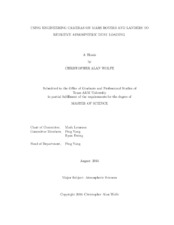| dc.description.abstract | Dust in the Martian atmosphere influences energy deposition, dynamics, and the viability of solar powered exploration vehicles. The Viking, Pathfinder, Spirit, Opportunity, Phoenix, and Curiosity landers and rovers each included the ability to image the Sun with a science camera equipped with a neutral density filter. Direct images of the Sun not only provide the ability to measure extinction by dust and ice in the atmosphere, but also provide a variety of constraints on the Martian dust and water cycles. These observations have been used to characterize dust storms, provide ground truth sites for orbiter-based global measurements of dust loading, and help monitor solar panel performance. In the cost-constrained environment of Mars exploration, future missions may omit such cameras, as the solar-powered InSight mission has.
We seek to provide a robust capability of determining atmospheric opacity from sky images taken with cameras that have not been designed for solar imaging, such as the engineering cameras onboard Opportunity. Our investigation focuses primarily on the accuracy of a method that determines optical depth values using a scattering model that implements the ratio of sky radiance measurements at different elevation angles, but the same scattering angle. MER engineering cameras are used to obtain non-solar sky images approximately 90° away from a low horizon Sun. A discrete ordinate radiative transfer algorithm and robust atmospheric scattering model are used in conjunction with the downlinked image files to produce both an image and model radiance profile. Optical depth is derived using a least-squares curving fitting routine within the scattering model that iteratively compares the two radiance profiles. Derived optical depth values are then compared against observed Pancam measurements to assess goodness of fit.
Operational use requires the ability to retrieve optical depth on a timescale useful to mission planning, and with an accuracy and precision sufficient to support both mission planning and validation of orbital measurements. This thesis will present a simulation-based assessment of an imaging strategy and its error budget, as well as a validation based on the comparison of direct extinction measurements from archival Navigation camera (Navcam) data. Results from this observational campaign will follow a preliminary validation that was done using synthetic sky images in order to test the robustness of the scattering model. After the observational results are presented, an in-depth error analysis will provide further detail pertaining to the fidelity of the derived measurements. Finally, this thesis will conclude with a brief discussion regarding the implications of this study and what the future has in store for ground-based optical depth retrieval. | en |


